Jordan Wright
May 20, 2013
Special to DC Metro Theater Arts, Broadway Stars, and localKicks
Lessons in Modern Japanese Dining
Following in my tried and true method of going to newly trendy restaurants at unfashionable hours, I had no problem getting into Daikaya, the wildly anticipated Japanese restaurant and bar with its first floor ramen house, Izakaya. I’m told the Japanese like to dine on many levels but my plan was to head upstairs where I would dine with one of the owners and be schooled in Sapporo.
Multi-lingual, world traveled, and wed to a beautiful Brazilian he wooed and won in Dubai, Daisuke Utagawa opened his two-story labor of love this month after a four-year wait and a tasting trip to Japan with his partners, Katsuya Fukushima (Daikaya’s Executive Chef) and Yama Jewayni. “When we were there I saw it with their eyes,” he said describing the men’s sense of wonderment as they hopped from place to place sampling food and drink and learning new recipes. From that fact-finding mission they cobbled together a unique Sapporo-influenced menu, “a sort of Japanese comfort food” he calls it. And with that I began my lessons from the very patient and congenial Daisuke.
“Sapporo is just one of twenty-six types of regional ramen in Japan. It’s our Japanese soul food,” he instructs, going on to name the major styles – Sapporo, Tokyo and Kyushyu noodles – the last of which he characterizes as a ‘turbid’ or milky noodle. These noodles are not the kind you microwave in a Styrofoam cup while cramming for finals. The traditional ramen served here are handmade and pre-aged for ten days in a noodle factory in Japan and flown over each week.
Daisuke’s aims were to make his restaurant a democratic spot. “In Japan you could be sitting next to a banker, a lawyer or a truck driver. It was important to create this same ambiance in the U. S. I wanted it to be a very free style. So we hired an American designer that we sent to Japan to learn about the essence of Japanese design and translate it here.” That is immediately noticeable by the crazy quilt walls and menus stapled inside of Japanese pop fashion magazines. My edition read “Love Toxic” and featured dozens of laughing preteens in heart emblazoned t-shirts posing with their plush teddy bears.
Daisuke took charge of the ordering and we began our culinary journey with salmon poke, pronounced “po-kay” for those unfamiliar with the Hawaiian raw fish dish followed by a refreshing salad of mizuna with dashi gelee and ponzu vinaigrette, its profile tempered by the highly unorthodox use of burrata. From a vast and complex selection of wines, beers, sake, Japanese whiskey (who knew?) I chose a softly floral Japanese made Belgian style beer, Suiyoubi No Neko by Yoho, for my pairing. It was the one flavor profile that wasn’t in the food, so I felt I chose well.
All of a sudden small plates are flying to the table in rapid progression. Baked Rappahannock oysters with teriyaki sauce and Parmesan cheese – a play on Oysters Rockefeller – and brined baby cucumber topped with thin-sliced togarashi. I dip into chawanmushi, a soothing custard soup with steamed egg and braised shitake and enoki mushrooms. A curative dish that would set you back on your feet after a night of sake sipping.
Blackened shishito peppers stuffed with gouda in a Japanese version of jalapeno poppers, and a hot-off-the-grill avocado with ponzu sauce, fresh wasabi and nori salt, are two more playful experiments. Sweet, hot, cool, spicy, tender, crunchy, salty, umami. It’s all about the balance.
A humble dish of fried garlic – nutty, creamy and not at all pungent – is swiped across kimchee-miso sauce. Next up are tender sautéed chicken livers – lovely. Skewered beef tongue is too tough. The first, and what would prove later, the only miss. But the memory is fleeting when little nuggets of tempura-fried chicken called Chicken Kara-age are dipped in ‘Chili-Kewpie Sauce’, a type of spicy Japanese mayonnaise. Lady Gaga would smack her kewpie doll lips over this and Colonel Saunders would have never dared to compete with these tasty morsels.
Daisuke explains that the Japanese have many words and phrases to describe the exact moment of putting food into one’s mouth and of how flavor and texture affect the taste buds. “For example when food passes through your throat or you drink a beer that is dry on the palate, we might refer to how it ends afterwards, like its dryness or ‘long tail’. But there are many others,” he remarks. An intriguing concept I would have liked to further explore.
To achieve the perfect sear on meats and vegetables the restaurant uses a Vulcan gas grill that emits infrared energy to mimic a charcoal grill. Daisuke chose it in place of an open flame grill they couldn’t get city approval for. It’s not any easier to use, its ferociously high heat demands full attention, but it achieves the same purpose.
With dessert Daisuke suggested Choya Ume, a delicious drink with a plum wine soaked lychee nut in the bottle. It accompanied a trio of unusual sweets from black sesame panna cotta and purin, a concoction of caramel ice, orange and burnt orange zest to chocolate aisu-kurimi, a kitchen sink of miso-banana caramel, chocolate crisps and crushed banana crisps. When I asked how they came up with such unusual combinations of ingredients, Daisuke answered in abbreviated Haiku, “If you listen, it will tell you how to prepare it.” I’d been schooled.
At last, after two and a half hours of Daisuke’s gentle instruction I felt I could navigate my way around Daikaya’s menu but I surely would need help in future understanding the over thirty sakes including such varieties as unfiltered ‘Nigori’, and unpasteurized ‘Nama’. That is better left to those more learned than I. I am but a humble cricket.
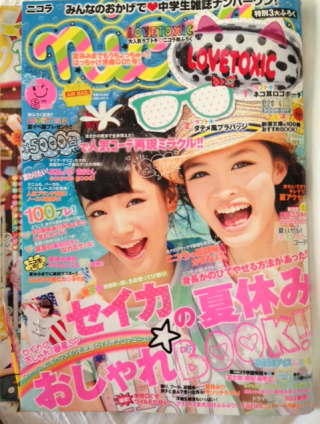
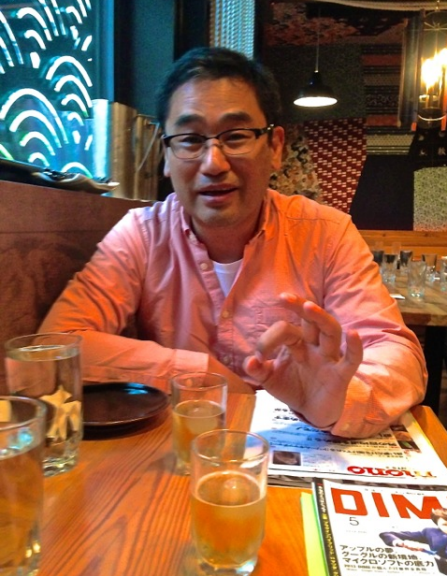
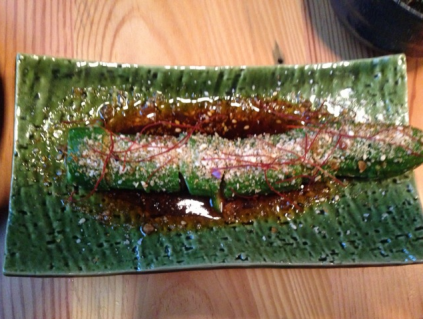
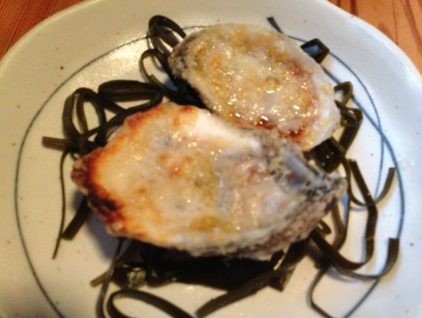
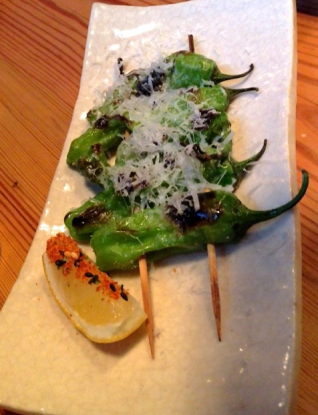
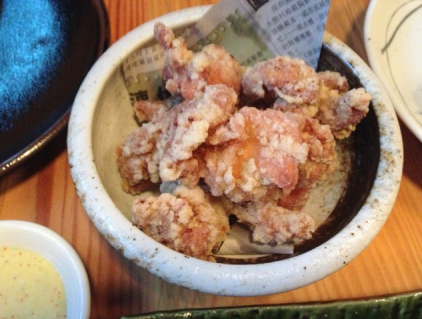
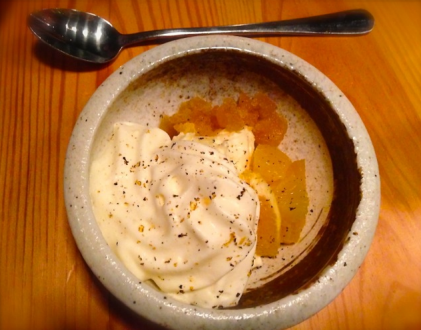
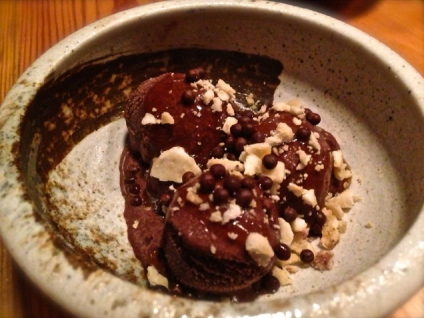
Leave a Reply